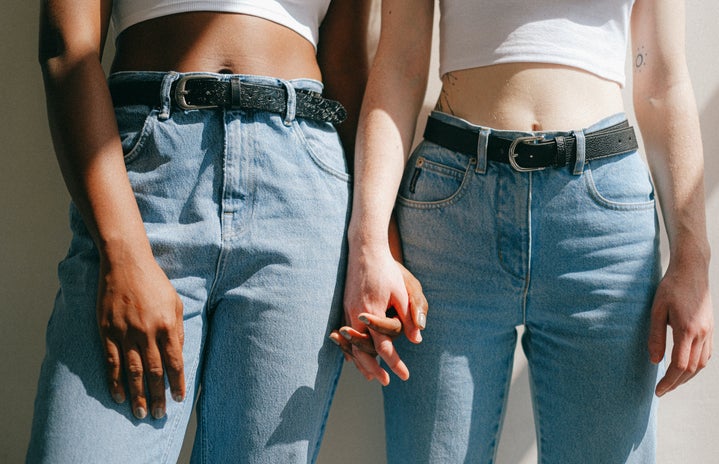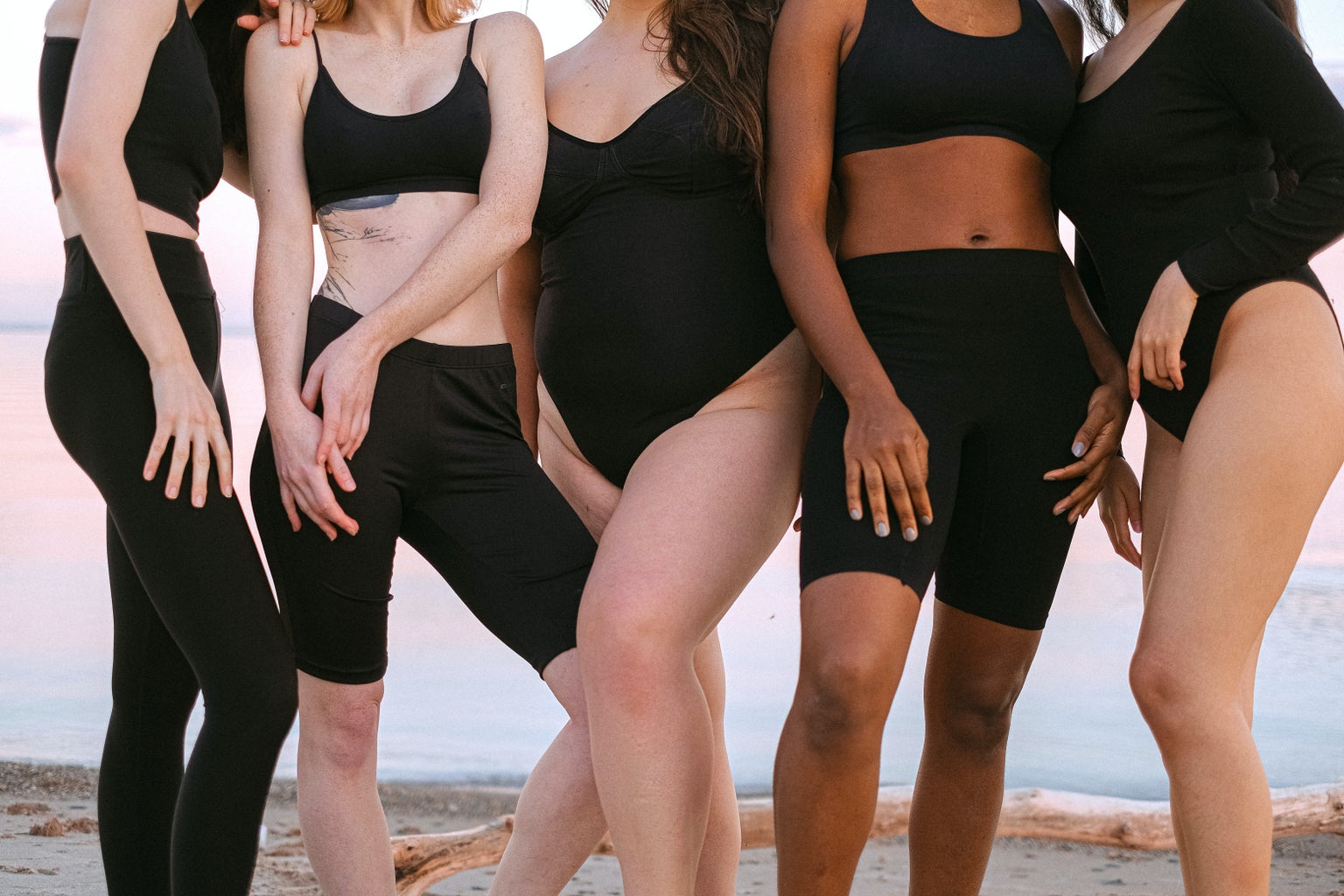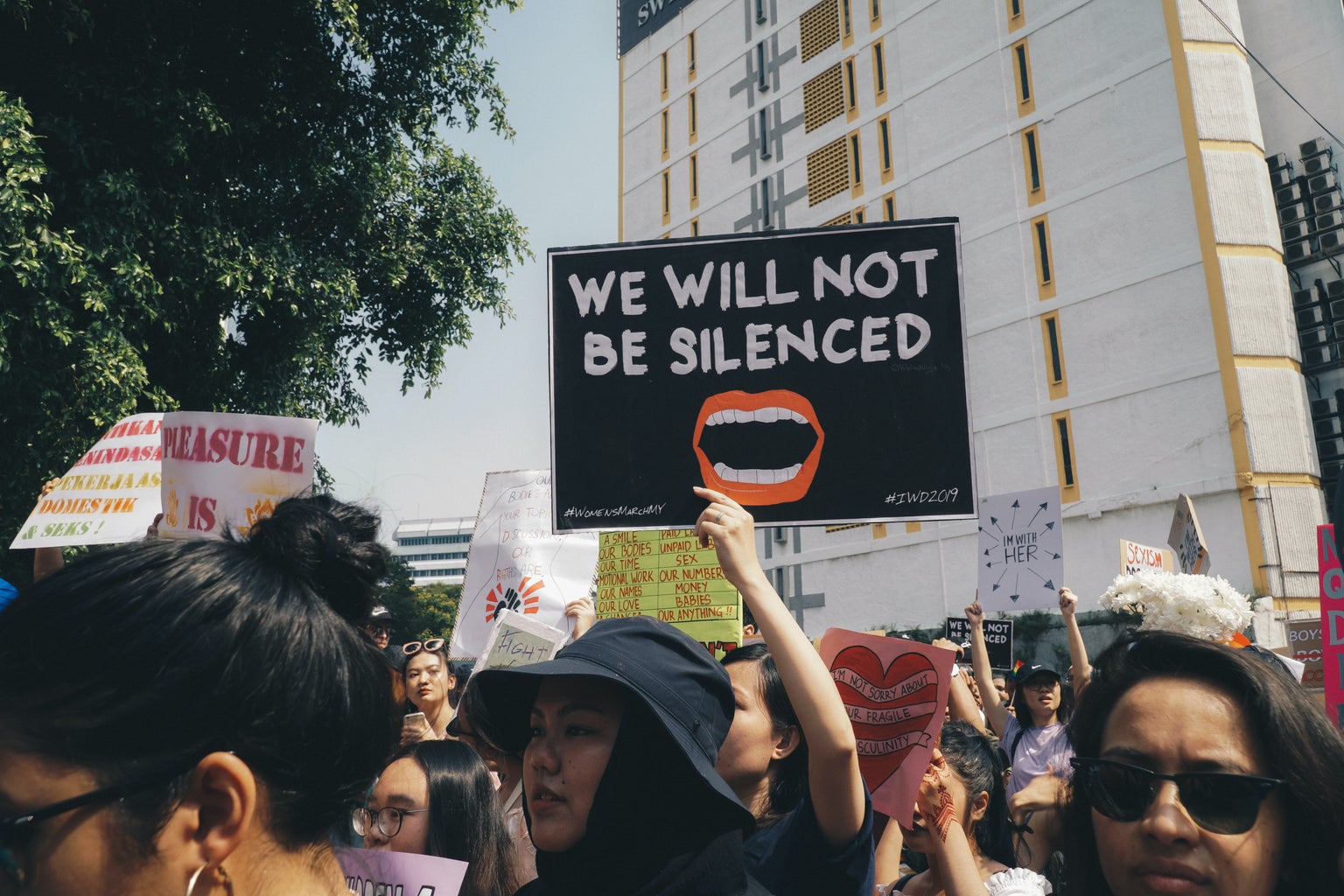I enjoy wearing crop tops. I think they look good on anyone. But I rarely wore any to school—it required too much deliberation. Was it appropriate for an educational setting? Would I get dress-coded? I find it disgusting that an exposed sliver of my bare stomach caused me to feel scared about what others would think, or how I could be reprimanded. I even felt nervous about wearing crop tops around the house, worried that my parents would mention how “short” my shirt was and cause a wave of embarrassment. But I soon learned that it wasn’t the act of showing skin that was wrong, it was other peoples’ reactions toward it. Growing up, young girls in particular are taught that it’s inappropriate to show too much skin, as if it’s shameful to feel confident in your body… and people still wonder why so many females struggle with body dysmorphia. Women face criticism about their clothing choices not because they’re inappropriate, but because men use those choices as an excuse to treat us like objects. Therefore, shouldn’t we focus on educating our male youth to respect women’s bodies instead of minimizing women based on what they wear?
I recently read an article from Allure, a popular online beauty magazine. It was titled, “11 Things You Need to Do Before You Wear a Crop Top.” Interested in what this publication had to say, I innocently started reading, but was appalled by what I saw. The first step to wearing a crop top, as author Lexi Novak writes, is to “debloat”. It goes on to suggest some de-bloating foods and a trip to the gym. Instead of spreading body positivity, the first thing this article insinuates to its reader is to make sure they look as skinny as possible. Unfortunately, this isn’t the only red flag. Step 6 tells us to “prep your skin”, meaning the stomach should be waxed and moisturized because “…everyone will be looking”. While the article does end by telling its reader that they don’t need Gwen Stefani’s abs to wear a crop top, its overall content is extremely damaging. I can imagine a young girl reading this, thinking that she has to change the way she looks in order to wear a shirt that exposes some of her stomach. Let’s start prioritizing the celebration of women’s bodies and promoting confidence instead of buying into society’s modesty and beauty standards.
Dis⋅tract⋅ing
/dəsˈtraktiNG/
adjective
Preventing concentration or diverting attention; disturbing.
The great thing about the word “distracting” is that you get to decide the noun that it describes. For example, “her clothes are distracting”. You. You’re the one who chooses the words, therefore they’re your opinion. I respect the fact that everyone is entitled to their own beliefs and thoughts, except when it comes to the way that others choose to present themselves. My body, my choice. Sound familiar? Let a woman wear a crop top, let anyone else do the same. Some people are so caught up in modesty or gender norms, as if fashion isn’t meant to be fluid and interpretive. I’m choosing to write about the struggle that women face in terms of clothing, not because I don’t acknowledge that this happens to all people, but because as a female I obviously feel strongly about my own objectification. According to a report from the American Psychological Association (APA), women are statistically more sexually objectified compared to males, particularly in the media. For this reason, I find it important to validate the frequency in which females are sexually objectified without the purpose of discrediting any other gender or sexual orientation.
Sexual violence is often a consequence of the perception that women’s bodies are nothing but objects of sexual pleasure. Too often we hear men blame a woman’s abuse on what she was wearing, the phrase “she had it coming” often accompanying. One’s appearance does not rationalize being a victim of sexual violence in any context, and the fact that some people believe it does is frankly terrifying. This is why wearing a crop top, I’ll admit, can be intimidating at times. I enjoy the fact that I feel confident enough to wear one, especially during the ungodly hot beginnings of midwestern autumns. But I also feel as though there’s a risk that every female takes when making that split-second decision to wear a crop top, or any sort of “revealing” clothing. Vulgar language such as “whore” or “slut” is often associated with women that dress in opposition to society’s modesty standards, which wrongly makes them targets of this violence. Women should be able to wear whatever they want without fearing unwanted attention from males or anyone, something that can easily turn dangerous.
Coming to college definitely served as a culture shock to me in terms of visual expression, even in rural Ohio. Although I attended public school with no uniforms or super strict dress codes, I feel as though nobody felt comfortable enough to wear what they truly wanted to classes. In college, however, I am inspired by the number of people who dress to be unapologetically themselves. It empowers me to experiment with my own clothing, and while I’m sure not many people would consider my sense of style to be anywhere near outgoing, I assure you that I have at least gained confidence in wearing crop tops with no regrets.
As a final parting reminder: crop tops are for all bodies, no matter the shape or size. Let’s lift each other up rather than tearing each other down! As a wise man named Harry Styles once said: “Treat People With Kindness.”




